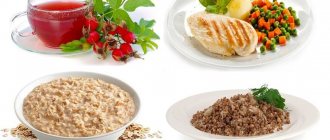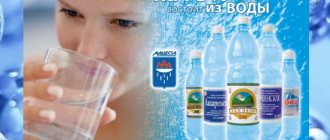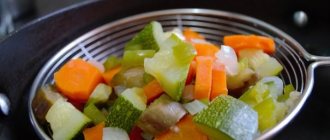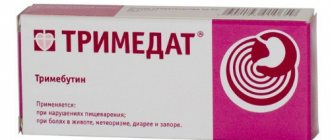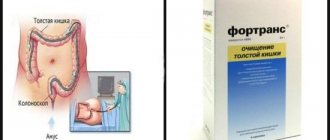kefir for pancreatitis
Kefir, due to its beneficial properties, often becomes the main component of various therapeutic diets and even children's diets. But this does not mean that its use is allowed in any form for any disease. Let's figure out whether kefir is allowed for pancreatitis, what norms for drinking a fermented milk drink are acceptable and how to drink it correctly.
How is kefir useful for a patient?
This fermented milk product contains lacto- and bifidobacteria, which prevent the proliferation of pathogenic bacteria in the body and normalize the intestinal microflora. The protein in its composition is easily absorbed by the body, so kefir drink serves as the main source of nutrition for patients on a protein diet.
The drink contains essential vitamins and microelements. Regular use helps improve immunity.
https://youtu.be/IKmpkDpkHKA
How to choose?
When choosing kefir for pancreatitis, you should give preference to products with a minimum shelf life and low fat content.
The drink with the prefix “bio” in the name has the best healing properties.
Biokefir contains beneficial probiotic bacteria (bacillus acidophilus, lacto- and bifidobacteria), which inhibit the growth of pathogenic microflora.
The prebiotics contained in kefir, or carbohydrate compounds (lactulose, dietary fiber, inulin), are able to pass from the stomach unchanged into the intestines, where they exert their healing effects.
Kefir of the BioMax brand is quite popular today.
Patients with pancreatitis should consume kefir:
- homogeneous consistency;
- fat content not higher than 1%;
- fresh, but no more than 1-3 days ago;
The most popular brands: “BioMax”, “Vkusnoteevo”, “House in the Village”, “36 kopecks”.
Kefir for acute pancreatitis and during exacerbation
During the initial period of the acute stage of the disease and during the period of exacerbation of the chronic stage, the channels and ducts of the pancreas become clogged, as a result of which enzymes accumulate and destroy the pancreas tissue from the inside, leading to necrosis. During this period, taking the product is contraindicated, as it promotes the production of enzymes and thereby enhances the inflammatory process.
Doctors allow this drink in acute cases only 8–10 days after the onset of the disease, as a low-calorie and easily digestible protein product.
First, fast for several days to stop the production of enzymes and cleanse the body. When drinking the drink, you should adhere to the following recommendations:
- Use only fresh low-fat weak kefir (24 hours of maturation). Medium (24–72 hours of ripening) and strong (more than 72 hours of ripening) stimulate increased secretion of gastric juice, which aggravates the exacerbation of symptoms.
- The product should have no more than 1% fat content or be completely fat-free (high-fat kefir can cause increased secretion of gastric juice).
- The composition should not contain additives, dyes or preservatives.
- Kefir should be at room temperature (a cold drink can cause cramps, and a hot drink can cause flatulence).
- Start taking with 50 g (a quarter of a glass), increasing consumption daily by 10–15 g, gradually increasing to 200 g per day (1 glass).
- It is better to drink at night, 1 hour before bedtime as a light dinner, to satisfy hunger.
Is it possible to drink kefir
Yes, kefir is not on the list of prohibited foods for an inflamed gland. Therefore, for pancreatitis, it is not only possible, but also necessary to be consumed periodically.
For patients with pancreatitis, it serves as an excellent source of easily digestible animal protein, which is required daily to ensure the functioning of the pancreas.
But, you need to know which kefir you can drink and which one you should refuse. A good fermented milk product has a uniform consistency and a pleasant smell. Do not buy a drink that is too fatty or sour.
Important! If you drink kefir uncontrollably during pancreatitis, then this will lead to complications.
Remission of chronic pancreatitis
In stable remission it is allowed:
- Take a product with 2.5% fat content.
- Use additives in the form of fruit puree, honey, berries.
- Drink the drink in addition to the evening, morning and afternoon.
- Use it to season salads, side dishes, and cereals.
- Periodically replace with biokefirs containing so-called live bacteria - bifidobacteria, which have a beneficial effect on the intestinal microflora. But you should not abuse biokefirs (they may contain fruit or berry additives that cause flatulence).
Is it possible to drink yogurt produced by lactic acid fermentation with this pathology? You can, but only fresh, without preservatives, prepared with pasteurized milk. Curdled milk for pancreatitis is indicated only in the remission stage of the chronic process; in acute forms, it can be consumed no earlier than 3 weeks from the initial manifestations of symptoms.
It is not recommended to exceed the daily dose of kefir of 200 ml, since an excess amount can be harmful - cause irritation of the mucous membranes, increased gastric secretion, fermentation and flatulence.
Beneficial features
When the gland is inflamed, kefir helps activate its function. In addition, the drink stimulates the functioning of digestive enzymes, so the patient’s condition gradually improves.
Additional positive qualities:
- Helps cleanse the stomach of various wastes and toxins.
- Has a good calming effect.
- Helps deliver nutritional components to the patient's body.
- Serves as a source for processing animal protein.
Chief gastroenterologist of the Russian Federation: “PANCREATITIS does not go away?! A simple treatment method has already healed hundreds of patients at home! To cure the pancreas forever you need...” Read more »
In addition, kefir is able to prevent the proliferation of harmful microorganisms directly in the digestive tract, and also normalizes the intestinal microflora.
What is included in the nutritious drink? Kefir is rich in vitamins from group B, C, A, PP and N. The composition contains a sufficient amount of minerals and macroelements.
Kefir is a fermented milk drink that is prepared from skim and whole milk using alcoholic or fermented milk fermentation.
Main components of kefir:
- Magnesium.
- Sulfur.
- Sodium.
- Potassium.
- Phosphorus.
Calorie content ranges from 30-56 kcal. In this case, the protein content is no more than 3%. It is recommended for this course of the disease to drink 1% kefir or low-fat. It is permissible to consume 2.5% for chronic pancreatitis, 53 kcal per 100 grams.
Most often, a fermented milk version with this concentration is prescribed for stable remission of the disease. Under no circumstances should you use 3.2% kefir if you have pancreatitis. It has few calories, but it can negatively affect the functioning of the pancreas.
Also read: Is it possible to have eggs for pancreatitis?
If you constantly consume kefir when you have an inflamed gland, this will help activate your defenses and also speed up the process of tissue regeneration.
Buckwheat with kefir in the morning on an empty stomach
For pancreatitis, doctors strongly recommend cooking buckwheat with kefir. The dish helps restore the functioning of the gland, as well as normalize the general condition of the patient.
Buckwheat with kefir is one of the popular folk recipes for restoring, or “cleansing” the pancreas.
In chronic cases of the disease and in remission, it is necessary to take the dish for 10-14 days; if necessary, the course is extended, but at the same time you need to take a short break.
Cooking rules
You will need:
- 1/2 cup buckwheat,
- and also about 250 ml of kefir, it is better to buy a low-fat product.
Before pouring the fermented milk product, the buckwheat should be rinsed well under running warm water. Place in a deep plate and pour in the drink.
Kefir and buckwheat for pancreatitis is a simple and affordable recipe for a dish with cereal, which is approved for use by doctors when diagnosing problems with the gastrointestinal tract and pancreas.
Infuse the porridge in a cool place for 10 hours (put in the refrigerator). Then, take out the dish and leave for an additional 1 hour at room temperature with the lid closed. For quick infusion, you can put buckwheat in a water bath.
Important! Since buckwheat can cause severe irritation to the gastrointestinal tract, it is necessary to prepare small portions first.
Now you know that kefir for pancreatitis is not only possible, but also necessary to be consumed. The most important thing is to know during what course of the disease you should drink, and in what dosage. Remember, if discomfort, heaviness in the stomach or pain occurs after consumption, you must refuse the drink and choose another healthy option.
Also read: Honey for pancreatitis of the pancreas
For pancreatitis, the diet is quite extensive, so every patient can find a suitable dish and drink for themselves.
How to make kefir at home
Recipe for making homemade kefir (1 l):
- Heat whole or pasteurized milk (900 g) until it is warm but not too hot.
- Add 100 g of kefir to the milk, homemade is better, but for the first time you can use store-bought kefir (without additives!) and sugar. Mix.
- Cover the container with the drink with a thick cloth (to protect it from light) and place it in a warm place to speed up fermentation.
- After 24 hours the product is ready for use. Before drinking, stir thoroughly.
- It is recommended to drink the prepared kefir on the same day.
- Leave 100 ml for the next starter. Store the product in the refrigerator.
Thus, according to experts, the benefits of kefir for the normal functioning of the pancreas are obvious.
Variety of fermented milk drinks
Kefir, fermented baked milk, yogurt, Varenets, and katyk are deservedly popular. When treating the pancreas, they have a beneficial effect, quench thirst, stimulate appetite, increase the secretion of gastric juice, and restore damaged cells of the diseased organ.
What foods are included in the patient’s diet depends on the characteristics of the disease. Lactic acid mixtures have a pleasant sweet and sour taste, low acidity, and pleasant consistency.
The patient needs proper nutrition, starting from the early period of the disease.
Fermented milk products for pancreatitis in the acute stage are consumed in small quantities. The patient is allowed to include in the diet:
- low-fat pureed cottage cheese;
- daily 1% kefir.
After 2 weeks, as the inflammatory process decreases, the following products are introduced into the diet:
- yogurt 1.5%;
- fermented baked milk 2.5%;
- curdled milk.
The patient can drink fermented milk mixtures that do not contain sugar, berry fillers, starch, thickeners, stabilizers. Fresh and high-quality products are recommended for the patient’s nutrition. Carbonated sour drinks are strictly prohibited.
Important information: Diet for acute pancreatitis of the pancreas
What can be replaced?
If for some reason it is impossible to use kefir for pancreatitis, you should try to replace it with fermented baked milk, yogurt, yogurt, cottage cheese, and sour cream. At the same time, products should be selected according to the same requirements, which include natural composition, low fat content, and freshness.
If you decide to use fermented baked milk or yogurt instead of kefir, then the principle of introducing them into the diet and the daily dosage remain the same. The amount of sour cream consumed should be reduced to 20-25 g per day. During the acute period, fermented milk is prohibited. After 8-10 days from the onset of the disease, you can introduce low-fat cottage cheese into the diet, and after a few days - yogurt, sour cream, yogurt, fermented baked milk.
To learn what else you can eat with pancreatitis and what you can’t, watch the following video.
Who is prohibited from drinking sour milk?
The use of yogurt is contraindicated for:
- Personal intolerance.
- Acute course of diseases of the digestive tract (ulcers, pancreatitis, gastritis, cholecystitis, etc.).
- Increased acidity of gastric juice
- Ulcer.
- Gastritis due to increased acidity of gastric juice.
- Erosive gastritis.
- Hepatitis.
- Severe, prolonged diarrhea.
Unlike milk, yogurt can be drunk by people with a slight degree of lactase deficiency. This disease disrupts the synthesis of lactose, a disaccharide found in dairy products. The lactic acid bacteria contained in yogurt facilitate the processing of lactose. However, if there is significant lactase deficiency, this product should be excluded from the diet.
It is not recommended to give yogurt to children under 1.5 years of age. In young children, the enzyme system is still weak, so such a product can create a significant burden on the pancreas, cause digestive disorders, and abdominal pain.
Possible harm and side effects
Only fresh yogurt has beneficial properties. In a fermented drink, the level of lactic acids and alcohol increases significantly. Therefore, its use will lead to gastrointestinal disorders, which are accompanied by:
- colic;
- painful sensations;
- flatulence;
- bloating;
- increased gas formation;
- stool disorder.
If you drink yogurt that has stood for more than three days, you can be seriously poisoned.
In case of intolerance to fermented milk products, taking yogurt can lead to the development of allergic reactions (rashes, redness, itching, burning of the skin, difficulty breathing), as well as digestive disorders. An allergy to this product may be caused by lactose or milk protein intolerance. In the latter case, the signs of the disease resemble those of a cold.
Milk curdling by-product and sour cream
Whey is a biologically valuable concentrate containing many vitamins: A, D, group B. However, it contains a significant amount of lactose, which worsens the patient’s condition. The patient experiences the following symptoms:
- flatulence;
- abdominal pain;
- nausea;
- diarrhea.
In the acute period of pancreatitis, nutrition should be based on the principle of excluding products that worsen the patient’s condition, therefore, feeding with homemade whey is not recommended.
Important information: Is it possible to drink green or black tea if you have pancreatitis?
During the period of remission, it is allowed to use it as an independent drink. Serum for pancreatitis is introduced into the patient’s diet very carefully.
It is recommended to drink the drink starting from 50 ml during breakfast.
Sour cream for pancreatitis, along with low-fat kefir, can be used in small quantities, but only after consulting a doctor. In the acute period of the disease, the product is completely excluded from the diet.
For pancreatitis, you can add sour cream to prepared dishes if the disease is in clinical remission. Start using the product with 1 tbsp. l. 1 per day. It is undesirable to include sour cream in the diet of patients suffering from intestinal dysbiosis for pancreatitis. With stable remission, you can eat a product with a fat content of no more than 10-15%.
Composition and calorie content of the drink
Curdled milk is obtained by fermenting milk based on pure cultures of lactic acid bacteria. Almost 90% of the drink consists of water. One hundred grams of the product also contains:
- 4.1 grams carbohydrates;
- 3.2 grams fat;
- 2.9 grams of protein;
- 0.7 grams of ash.
The main protein in curdled milk is casein. The synthesis of this protein occurs slowly, which ensures a long, gradual supply of amino acids into the blood, which is especially important for athletes.
The drink is enriched with useful vitamins, minerals and biologically active substances:
- vitamins A, B, C, H, PP;
- calcium, potassium, fluorine, zinc, iron, phosphorus, selenium, manganese, magnesium.
Curdled milk is enriched with fatty acids (mainly myristic, oleic, palmitic, stearic), amino acids, and lactic acid (lactate). It also contains enzymes that improve digestive and metabolic processes.
The calorie content of a product depends on the degree of fat content. The calorie content of 100 ml of yogurt with 2.5% fat is 53 kcal, for a drink with 3% fat - 60 kcal.
The drink contains many useful substances. However, above all, it is valued for its content of beneficial lactic acid bacteria, enzymes, calcium and phosphorus. It should be noted that yogurt contains calcium in the most easily digestible form. In addition, the drink contains phosphorus, which is necessary for good calcium absorption.
Therefore, fermented milk products are very valuable not only for normalizing digestion, but also for strengthening and normal development of bone tissue.


